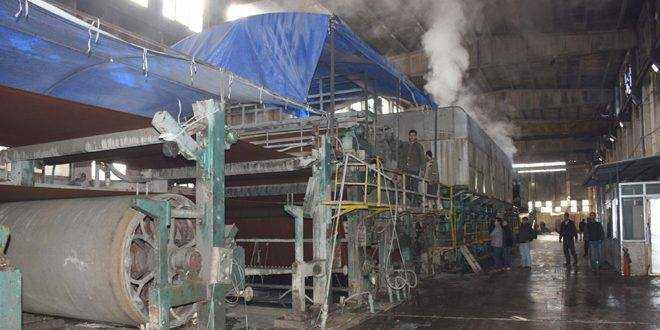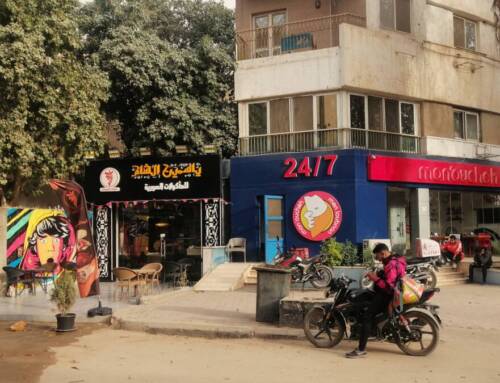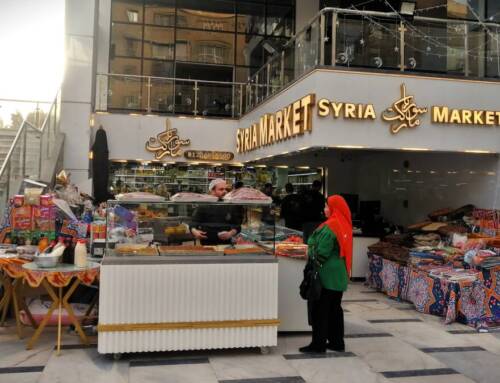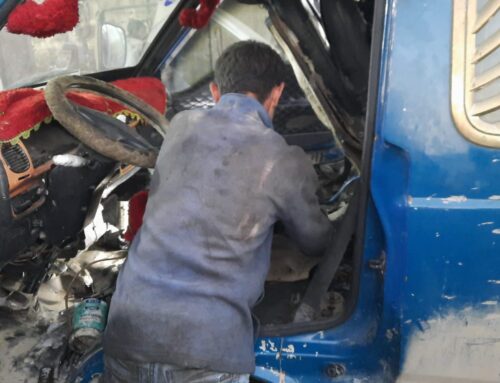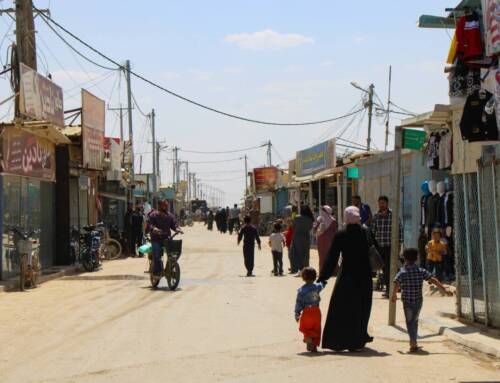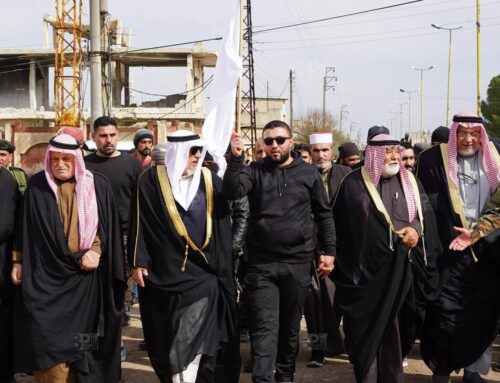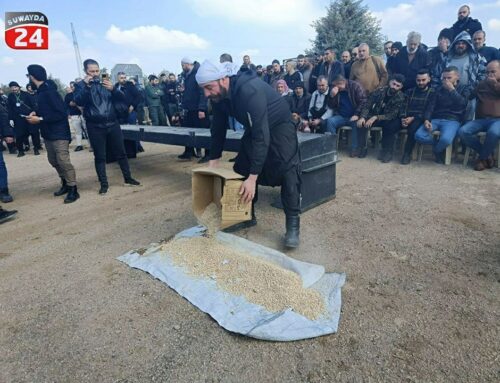Aleppo factory owner looks to sell business, citing checkpoints, onerous taxes and low profits
After more than 10 years in the business, an Aleppo […]
9 August 2017
After more than 10 years in the business, an Aleppo textile factory owner named Raed is selling.
The 60-year-old opened a mid-sized factory in Sheikh Najjar, an industrial zone at the northeast edge of Aleppo, in 2006 to produce fabrics for furniture and curtains.
“I spent years of my life working in the textiles field, and it had been my dream to own a factory,” Raed tells Syria Direct’s Noura Hourani. “Now I am seeing it vanish into thin air.”
Raed and other factory owners in Sheikh Najjar are struggling to turn a profit in Aleppo, the country’s former economic hub. The Syrian government is still repairing water and electricity lines that manufacturers—like other citizens—rely on six months after regime forces recaptured the city from rebels. Dozens of checkpoints placed along roads in and out of the industrial areas levy high fees on any cargo trucks leaving the district, 15 times what they were before the war, Raed says.
The “fatal blow,” the factory owner says, was the government’s announcement of Decree 172 in June.
The decree reduces tariffs by 50 percent for “raw materials necessary for local industries.” That includes textiles, now classified as a raw material.

This means that Aleppo’s upholsterers and curtain manufacturers—who once purchased textiles prepared and processed by factory owners like Raed—are now able to secure cheaper materials from abroad.
The decree is meant to “support the national economy, so manufacturers are able to get supplies [from abroad] that are relatively low in quantity,” according to a statement posted by the Syrian Ministry of Industry on August 6.
But for Raed, the decree means that he will not be able to compete with the low-price textiles flooding the market from outside the country.
The 60-year-old would rather sell his factory and live off the funds rather than “bearing the pain and hardship of trying to make a profit” in the tattered remains of Aleppo’s once-booming industry.
Q: Why did you choose to put your factory up for sale after years of patiently developing the business?
My textile factory consists of four large, automated machines that produce fabric for upholstering furniture and for curtains. Before the revolution, each of the four machines would produce a net profit of $4,000 per month, for a total profit of $16,000 per month. But the situation gradually became worse.
I’ve struggled with many difficulties operating the factory. Those are aside from the fact that regime and opposition forces were vying to control the important industrial area. The losses followed, and now the factory’s monthly profit is $200.
For me and many factory owners, the recent decision by the government to classify textiles as raw material was the fatal blow. The profit I make from the factory isn’t even enough to cover the cost of lunch every day.
The machines are valued at $240,000. Selling them—even if it means losing the $200 monthly—is much better than bearing the pain and hardship of trying to make a profit at the end of the day. That is, if you can make a profit at all.
Q: Sheikh Najjar, a main industrial district of Aleppo, was the site of intense battles between Syrian regime and opposition forces for years. How did the clashes affect your ability to operate your business and what is the state of your factory today?
The opposition took control over the industrial area in 2012. At the same time, they took control of a thermal power plant that supplied Aleppo city with electricity.
While the opposition was in control, factory owners were able to move between rebel and regime areas. Typically, factory owners were from areas of [regime-controlled] west Aleppo. They could easily move [between the rebel and regime areas] and transport their goods. The situation was relatively good, and the industrial area was able to keep on producing.
Some owners preferred to change the location of their factories, anticipating future losses or damage. There was certainly a decrease in profits because of the conflict, but opposition control didn’t make a significant dent in industry at that time.
Things remained that way until mid-2014. The regime regained control of the industrial area, while Daesh [the Islamic State] took control of the thermal power station. The situation began to deteriorate quickly.
Electricity in the industrial area was cut off, so our work became more difficult and expensive. Factory owners began to rely on diesel-run generators to run their factories. Many had to shut down their factories because they couldn’t secure expensive diesel fuel.
The regime later regained control of the power plant, but it was bombed by multiple sides and went out of service permanently.
The regime also set up about 40 checkpoints inside the industrial area [after taking control]. We need to pay fees at the checkpoints when entering and exiting the industrial area. Before the revolution, a factory owner would pay $100 for every cargo truck that went out. Now, it’s at least $1,500, 15 times what it was.
People protested about a month ago to demand the checkpoints in the region be lifted and the situation improved. The government has not yet responded.
[Ed.: Hundreds of residents in the Sheikh Najjar district of Aleppo city protested on July 7, reported pro-opposition Al-Modon at the time. The demonstrators demanded the removal of government-run checkpoints in the region, improved water and electricity services as well as an end to exploitation and intimidation by pro-Assad militias in the area.]Q: Your children left the country soon after conflict began in 2011. Why did you choose to stay in Aleppo and continue working in the textile industry?
The main reason my children left was fear of conscription, of being mixed up in the regime’s military matters.
They tried hard to convince me to sell all my property and leave with them so we could start a new, stable life in Turkey until the future of the country became clear. But I refused.
How could I abandon all that I’ve built at a moment’s notice? I spent years of my life working in the textile field, and it had been my dream to own a factory in the industrial area. I’ve worked in this place for 25 years. I know just about all its streets, the streets I go out into and return from. I struggled a lot to achieve my dream, and now I am seeing it vanish into thin air.
Q: As a contributor to the city’s textile industry, why do you think the government issued this decree? What will you do if you are not able to sell your factory?
As I and a number of factor owners see it, the government is trying to pressure us to sell off our factories so they can take over the industrial area.
Both the factory owners and [Aleppo’s local] Chamber of Industry are opposed to the latest decision. We hope that it is reversed, but I believe that nothing will change.
Even if the government reverses the decision, the situation will not change much because the other difficulties faced by factory owners are more serious and harmful than the decision itself.
So far, the government has not been able to secure a stable supply of electricity, water and fuel. The checkpoints and the shabiha rule over us. The government could put a stop to that if it wanted to.
I’ve put up the factory machines for sale after having shut down operation completely. I received a bid of SP50,000,000, or $100,000, for the four machines even though they are actually worth $240,000.
I have to sell because I haven’t received any bids higher than this. I don’t think I’ll get a better deal because the buyer knows that he can exploit my current circumstances.

